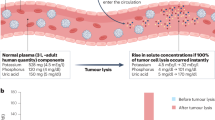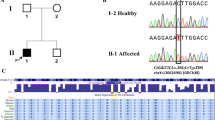Abstract
A 53-year-old woman with non-Hodgkin lymphoma underwent an autologous bone marrow transplant (BMT). Incomplete reconstitution necessitated the use of a long-term central venous catheter. One year after BMT she presented with fever. Echocardiography revealed vegetations on the tricuspid valve. Gram-positive rods grown from blood cultures and catheter tip were identified as Oerskovia xanthineolytica. We report the first case of native valve endocarditis caused by this organism.
This is a preview of subscription content, access via your institution
Access options
Subscribe to this journal
Receive 12 print issues and online access
$259.00 per year
only $21.58 per issue
Buy this article
- Purchase on SpringerLink
- Instant access to full article PDF
Prices may be subject to local taxes which are calculated during checkout
Similar content being viewed by others
Author information
Authors and Affiliations
Rights and permissions
About this article
Cite this article
Ellerbroek, P., Kuipers, S., Rozenberg-Arska, M. et al. Oerskovia xanthineolytica: a new pathogen in bone marrow transplantation. Bone Marrow Transplant 22, 503–505 (1998). https://doi.org/10.1038/sj.bmt.1701353
Received:
Accepted:
Published:
Issue Date:
DOI: https://doi.org/10.1038/sj.bmt.1701353
Keywords
This article is cited by
-
A case report of the differential diagnosis of Cellulosimicrobium cellulans-infected endocarditis combined with intracranial infection by conventional blood culture and second-generation sequencing
BMC Infectious Diseases (2020)
-
Infections due to Cellulosimicrobium species: case report and literature review
BMC Infectious Diseases (2019)
-
Oerskovia xanthineolytica Bacteremia in an Immunocompromised Patient Without a Foreign Body
European Journal of Clinical Microbiology and Infectious Diseases (2003)



